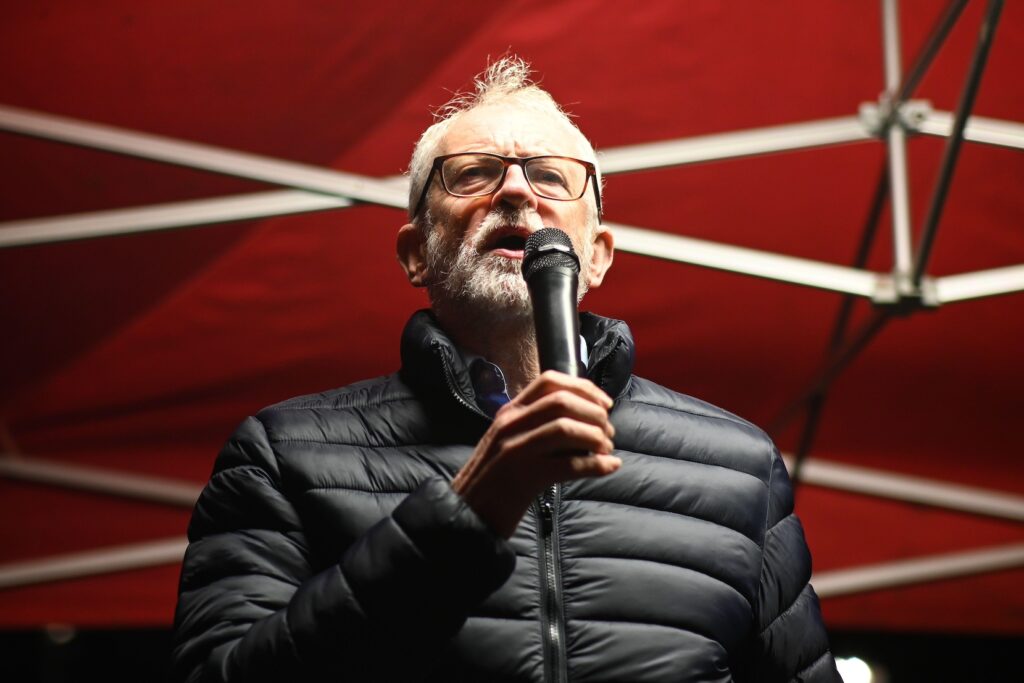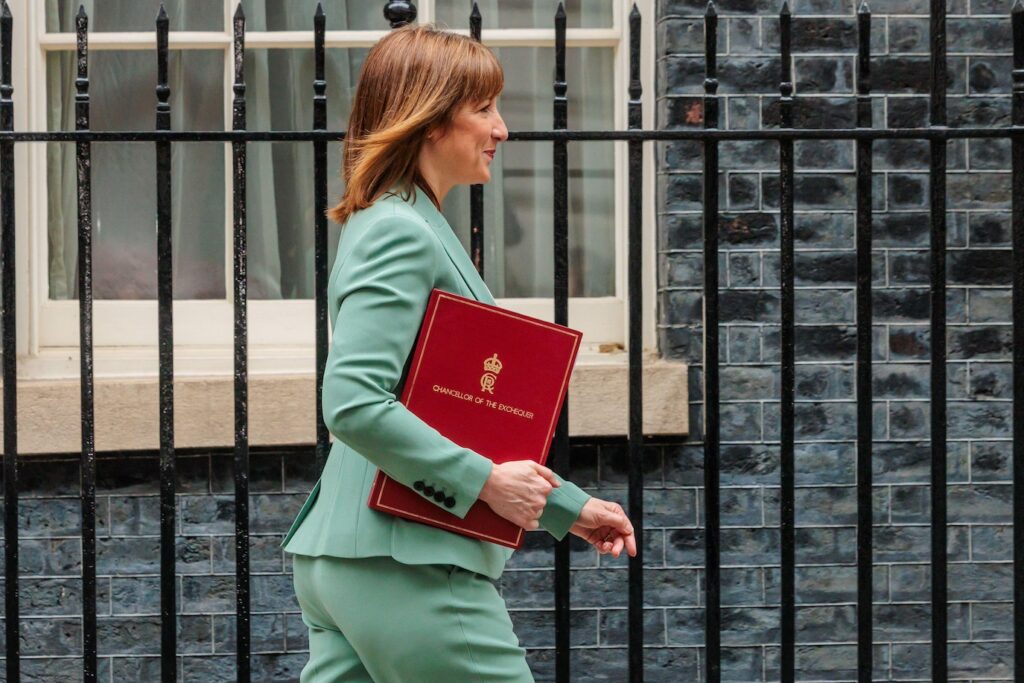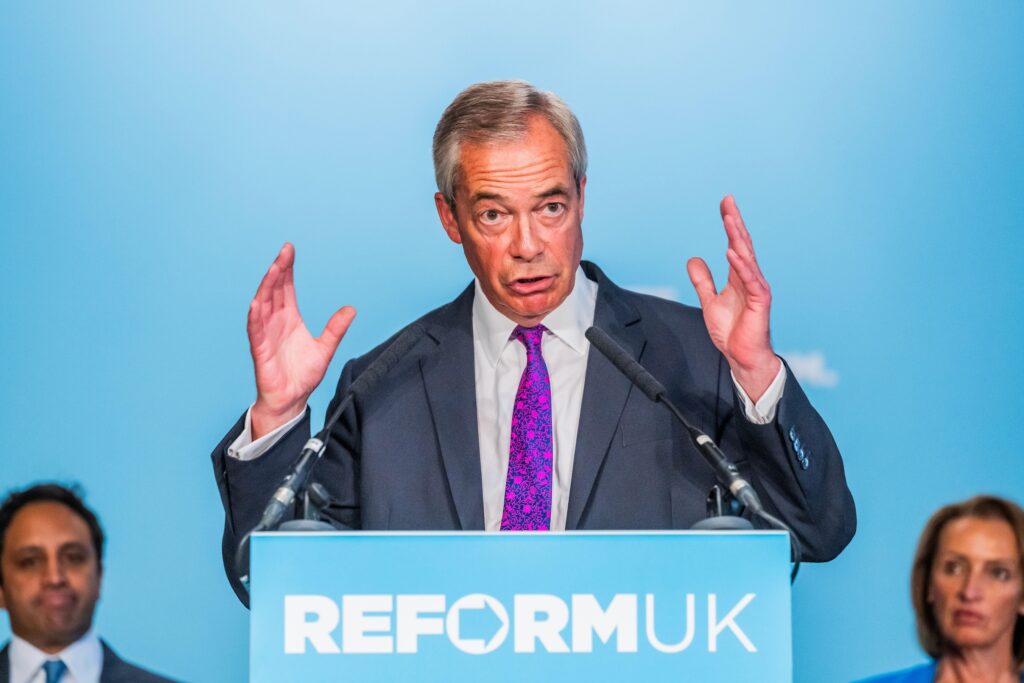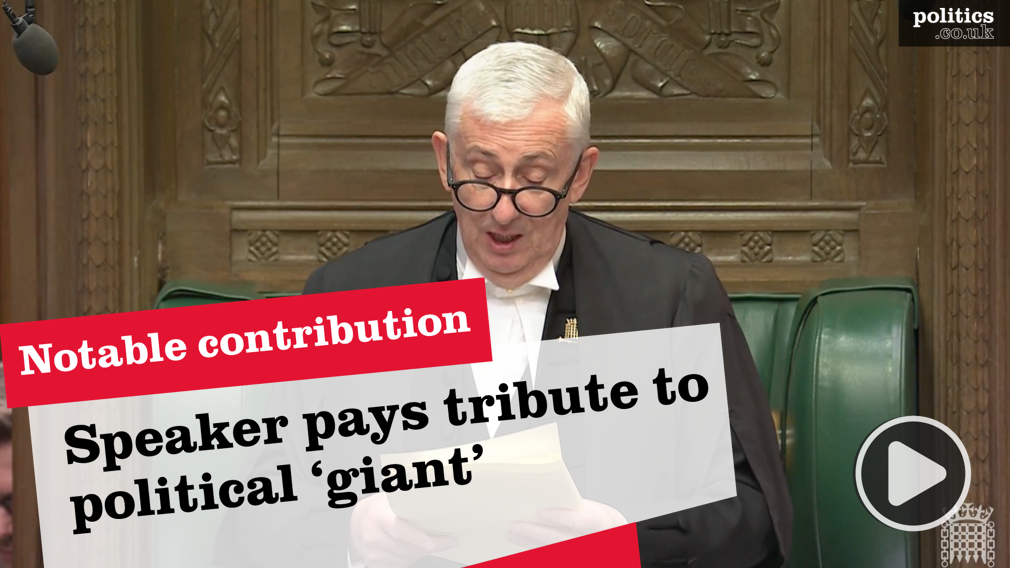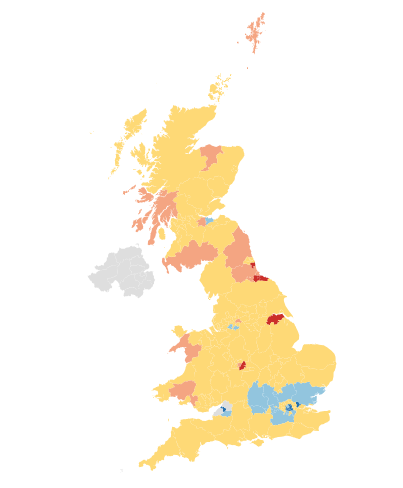Overview
High streets traditionally embodied the historical, cultural, and economic hub of British communities.
Yet increasing, numbers of town centres are now characterised by boarded-up windows, derelict shop floors and modest footfalls.
In recent decades, many of Britain’s town centres have been falling into decline. This decline is largely attributed to the rise in online retail giants, the creation of large out-of-town shopping centres, and unaffordable business rates.



The prosperity of city centres suffered further during the Coronavirus Pandemic of 2020-21. The resulting periods of national lockdown, forced a number of high street retailers into liquidation and prompted many of those who remained, to rethink their business strategies.
According to the Centre for Cities, an independent urban policy research unit, approximately 50,000 shops were lost from UK high streets between 2010 and 2020 – a figure which continues to rise.
Research compiled by the Local Data Company, tracking more than 200,000 outlets on High Streets, shopping centres and retail parks operated by businesses with more than five shops, reported in February 2022 that 17,219 chain store shops closed in 2021. This equates to an average of 47 stores shutting every day in 2021, almost the same as the levels of 48 in 2020.
The largest falls were amongst fashion retailers (1,382 closures), banks (998 closures), and convenience stores (899 closures).
Why are high streets suffering?
High Street shop closures are largely attributed to four broader issues: competition from shopping centres and retail parks, the growth of online shopping, bank closures, and unaffordable business rates.
Shopping centres
In 1976, the UK’s first out-of-town shopping centre opened in Hendon, North London.
By 2020, the UK was home to 42 large out of town shopping complexes, most of which were located in city suburbs. The growing impetus for out-of-town shopping venues was accelerated by the rising costs of rents in towns and city centres, coupled with infrastructural improvements facilitating travel across larger areas.
Retailers profited out of town, by securing larger shop floors at significantly lower costs than those in the town centre. They also benefited from longer opening hours, and better access for loading and deliveries.
From the consumer perspective, large out of town shopping centres and smaller retail parks, offered a greater density and variety of shops within a small, often under-cover radius. Free or low-cost parking facilities lured families further away from town centres at accelerating speeds. By 2016, vacancy rates in the UK’s retail parks were 6.6%, half that of the 11.7% recorded in town centres.
Online retail
Online shopping – or e-Commerce – is now widely cited as the greatest threat to the high street. From the turn of the century, retailers have turned increasingly to the internet as a supplementary or replacement sales platform.
In 2016 surveys reported that 85% of British consumers aged 18 and over had shopped online that year.
By 2018, 18.2p of every £1 spent by shoppers was spent online. 6% of total food purchases and 17% of clothing sales took place over the internet. As detailed below, online shopping then grew further in the midst of the 2020/2021 coronavirus pandemic.
In terms of economic viability, online retail offers the retailer a much cheaper and efficient means of trading, while reaching out to a significantly larger (sometimes global) customer pool.
To the consumer, online retailing offers access to a greater variety of goods and providers, and is underpinned by the overarching convenience of stay-home shopping – particular for those with limited mobility. Online prices are typically perceived as being cheaper than in-store, due to scale, lower overheads, increased competition, and the ease of price-comparison between sites.
Bank Closures
The closure of bank branches is also said to have exacerbated the existing threats to the high street. Previously a person’s visit to the bank, was one of the core reasons why they had historically popped into town.
However, increasing numbers of bank branches are following in the footsteps of retailers by shifting the bulk of their business to online banking.
Between 2015 and 2020, the NatWest Group – comprised of NatWest, Royal Bank of Scotland, and Ulster Bank – closed 1,086 branches.
A further 624 branches were lost from Lloyds Banking Group, responsible for Lloyds Bank, Halifax and Bank of Scotland.
The trend was further consolidated in January 2021, following the announcement by HSBC that it was closing 82 HSBC branches over the course of the month.
Business rates
In his book, Retail Therapy: Why the Retail Industry is Broken and What Can Be Done To Fix It, retail expert Mark Pilkington identifies business rates as a primary cause of high street decline.
Following the closure of the Department Store Beales in early 2020, the Company’s former Chief Executive Tony Brown cast the blame on the store’s unaffordable business rates: “Business rates are having a catastrophic effect on the high street.” Brown claimed that certain stores faced rates bills of up to ten times the cost of their rent. These rates exacerbate fierce competition from online retailers.
In evidence to a Parliamentary inquiry in 2019, the online giant Amazon reported paying £63.4 million of rates in the UK, largely from its network of 94 buildings and locker sites across the country. This was the equivalent to less than 1% of the Company’s UK sales in 2019 of £8.77 Billion.
By comparison the retailer Next paid some £100 million of business rates on its far smaller turnover of £4 billion, equating to 2.5% of its sales costs. Retail consultant, Mark Pilkington considers some form of online tax a necessity, should high street shops stand a chance of competing equally, against growing online sales.
The effect of rising business rates on already-struggling retailers prompted over 50 retail industry leaders, including the chief executives from M&S, Boots and Debenhams, to write to the then chancellor Sajid Javid calling for a much-needed reform on business rates.
It has been suggested that the system should move towards ‘turnover-based-rents’ or “plug and pay” policies catering for the likes of pop-up shops. At present, long and inflexible leases pose financial burdens on local or small-scale retailers, not least given the unpredictability of their future takings in the face of online competition.
Long-term strategy required after Covid support ‘halted’ decline of high streets, says report
The Recent History of the High Street
Cloned Town Centres
Professor Cathy Parker, co-chair of the Institute of Place Management (IPM), has criticised the High Street’s excessive emphasis on retail during the 1980s and 1990s. Over recent decades, this has resulted in the growing prevalence of regional, national and transnational chain stores.
It is claimed that as a result, town centres have just come to resemble identical sets of high street brands. The New Economics Foundation report ‘Clone Town Britain’ (2004) found that, out of the total towns surveyed, 41% could be classed as ‘clone towns’.
This growth of ‘clone high streets’ is said to have stripped UK streets of their once-unique qualities, losing their appeal as places to gather among the local communities.
Given the simultaneous move towards online shopping, it is suggested that strategies aimed at regenerating town cities should focus less on retail – and more on the experiential value of the high street, where people go to work, rest and play.
The 2012 Portas Review
In 2012, the deteriorating state of once-vibrant town centres prompted the Government to commission The Portas Review: an independent review into the future of our high streets.
Conducted by television presenter and retail consultant, Mary Portas, the review was published alongside the government-commissioned ‘Understanding High Street Performance’, which found that a third of UK high streets were in a state of degeneration.
The Portas Review identified the core reasons for this decline, before describing recommendations on how best to restore the socio-economic value of UK high streets.
In the foreword of the review, Portas presented a stark image of the country’s prevailing conditions:
“Although some high streets are thriving, most have a fight on their hands. Many are sickly, others are on the critical list and some are now dead. We cannot and should not attempt to save every high street but my findings have led me to believe that unless urgent action is taken, the casualties will only continue to multiply.”
Future High Street Fund
In the 2018 Budget, the government detailed plans for a Future High Streets Fund. The aim of the Future High Streets Fund was to renew and reshape town centres and high streets in a way that drives growth, improves experience and ensures future sustainability. It will do this by providing co-funding to successful applicants to support transformative and structural changes to overcome challenges in their area.
High Street Task Force
The High Streets Task Force was set up by the government in 2019 to help each local authority transform their high streets into thriving community spaces.
Comprising over 150 experts, mentors and facilitators, the task force promotes the development of attractive public seating areas, open green spaces or architectural design.
Likewise, a greater emphasis on public leisure and entertainment facilities (pop-up stalls, street performers, hospitality) has been found to exert significantly greater appeal than the opening of new shops. Strategies of this nature are thought to align more closely with the changing consumer climate which places greater value on decency and quality of experience.
The High Streets Task Force has stressed the need for greater business engagement to support local economies and, subsequently, their streets. It is suggested that in Manchester, the increasing number of city centre workers since the start of the Twenty First Century, has helped power a corresponding rise in the number of high street amenities in the City.
The importance of the prosperity of the surrounding area to the potential success of the High Street has been supported by research from the Centre for Cities. As of January 2021, Newport, Bradford and Wigan were shown as recording the highest number of city centre vacancies, accounting for more than one in five units.
By contrast, Cambridge, York and London were shown as maintaining a low high street vacancy rate of just 7%. This research went on to note how inhabitants of Cambridge, York and London all receive an average of £634 more disposable income per month than residents of Newport, Bradford and Wigan.
It thus suggested that higher average salaries played a role in drawing both people and investment into an area, contributing to greater footfalls, greater spending, and greater demand for high street retail.
High Street Heritage Action Zones
In 2020 the government announced a £95 million into a High Streets Heritage Action Zone programme to be delivered by Historic England.
The initiative sets out to unleash the economic, social and cultural heritage of the high street, and “breathe new life into it for future generations”.
68 English high streets were set to receive proportions of the fund.
Coronavirus pandemic
In spite of the efforts being made to try and support the High Street, its fortunes were suddenly dealt a crushing blow in the 2020-21 coronavirus pandemic.
In the words of Mary Portas,”Covid-19 has crystallised a social and economic movement that has been bubbling under this past decade.”
Online sales soared throughout the COVID-19 lockdowns of 2020-21. In June 2020, online sales in the UK were growing at a rate of 73.4%, despite the fact that this was in a period that was between the national lockdowns in place that year. During this time, footfall on the local high street collapsed.
As observed in the UK Online Retailing Market Report 2020, the online sales channel was growing prior to the pandemic. However, the virus accelerated changing consumer habits which will likely be embedded in future practices.
The report claimed that, “The prolonged period of heightened online demand during the lockdown period will cause a longer-term expansion of the repertoire and frequency of products purchased online”.
According to figures from the Office of National Statistics, in the year 2020, clothing stores saw a 25.1% decline in their sales volumes, while department stores reported a 5.2% decline.
Non-store retailing on the other hand, saw a record annual increase in sales volumes of 32.0%. The total value of online retail increased by 46.1% in 2020 – the highest annual growth reported since 2008.
As a consequence of the pandemic, a number of large retail brands folded as 2020 progressed. The end of 2020 saw the department store Debenhams fall into liquidation, shortly after the closure of Philip Green’s Arcadia group – parent company of popular High Street brands Topshop, Miss Selfridge and Wallis.
Build Back Better
In July 2021 the government launched a ‘Build back better’ High Streets Strategy to support the long term development of high streets.
The strategy had give goals: Breathing new life into empty buildings; supporting high street businesses; improving the public realm; creating safe and clean spaces; and celebrating pride in local communities.
This strategy dovetailed with the ‘Town Deals’ programme, a £3.6 billion fund dedicated to improving community infrastructure.
In May 2022, the government released details of its new levelling up and regeneration bill. The Bill will give local mayors and council leaders the power to let out empty high street retail buildings for residential use. Planning reforms within the bill also aim to make sure communities can benefit from ‘alfresco’ dining in town and city centres.
MPs call for long-term planning overhaul to support high streets post-Covid
Quotes
“New benchmarks have been forged against which our high streets are now being judged. New expectations have been created in terms of value, service, entertainment and experience against which the average high street has in many cases simply failed to deliver.” – Mary Portas, Portas Review (2011)
“High street stores are a crucial part of our communities, forming the backbone of local economies. It was great to be able to visit some of the fantastic local businesses here in Uxbridge and thank them for their patience during what I know has been a very challenging period. I would urge people here and across the country to support local business and shop safely.” – Boris Johnson (2020)
“The cracks in the retail industry had been visible for a very long time, before coronavirus struck a devastating blow. Retail behemoths had come to rely on the physics (how fast, how big and often how cheap) of their business, but underestimated chemistry. To truly engage, there needs to be a connection, a resonance. A reason. It’s taken a global pandemic to accelerate their race to the nadir, but they were already over half-way there….” – Mary Portas, (2020)
“It’s pointless to use a store as a glorified warehouses full of stuff when stock can be seen and sold online. The shop floor will shrink and it will be about engaging customers in a way that they can’t experience from their screens,” – Retail expert Mark Pilkington (2020)
Statistics
Offices accounted for around 11% of all addresses on British high streets in March 2020. “Other services” sectors consisting mostly of private sector office-based firms made up between 29% of high street employment in the North East and 49% in London in 2018, with the rate in City of London at 85%.
High street retail employment fell in more than three-quarters of local authorities between 2015 and 2018.
Hub towns’ high streets have retained more of a retail focus than other places, being composed of 36% retail addresses, compared with 29% in Great Britain overall.
High street employment in the accommodation and food services sector was growing in most local authorities between 2015 and 2018. In 2018, 121,440 people were employed in pubs and bars on British high streets, with London and the South East having the highest numbers. Many of the people living on or around high streets in British cities are higher education students.
[Source – High Streets in Greet Britain, Office for National Statistics, 2020]









